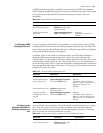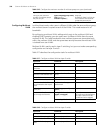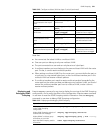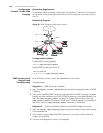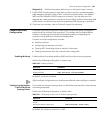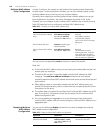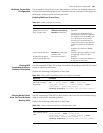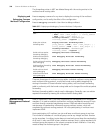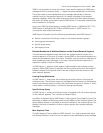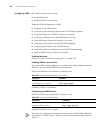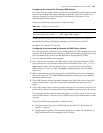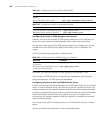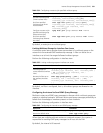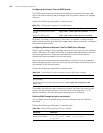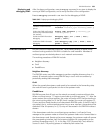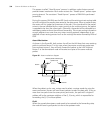Internet Group Management Protocol (IGMP) 327
IGMP is not symmetric on hosts and routers. Hosts need to respond to IGMP query
messages from the multicast router, —, report the group membership to the router.
The router needs to send membership query messages periodically to discover
whether hosts join the specified group on its subnets according to the received
response messages. When the router receives the report that hosts leave the group,
the router will send a group-specific query (IGMP Version 2) to discover whether there
are no members in the group.
Up to now, IGMP has three versions, namely, IGMP Version 1 (defined by RFC1112),
IGMP Version 2 (defined by RFC2236) and IGMP Version 3. IGMP Version 2 is
currently the most widely used version.
IGMP Version 2 benefits from the following improvements over IGMP Version 1:
■ Election mechanism of multicast routers on the shared network segment
■ Leaving group mechanism
■ Specific group query
■ Max response time
Election Mechanism of Multicast Routers on the Shared Network Segment
A shared network segment means that there are multiple multicast routers on a
network segment. In this case, all routers running IGMP on the network segment can
receive the membership report from hosts. Therefore, only one router is necessary to
send membership query messages. In this case, the router election mechanism is
required to specify a router as the querier.
In IGMP Version 1, selection of the querier is determined by the multicast routing
protocol. While IGMP Version 2 specifies that the multicast router with the lowest IP
address is elected as the querier when there are multiple multicast routers on the
same network segment.
Leaving Group Mechanism
In IGMP Version 1, hosts leave the multicast group quietly without informing the
multicast router. The multicast router can only depend on the timeout of the response
time of the multicast group to confirm that hosts leave the group. In Version 2, when
a host leaves a multicast group, it will send a leave group message.
Specific Group Query
In IGMP Version 1, a query of multicast routers is targeted at all the multicast groups
on the network segment. This is known as General Query.
In addition to General Query, IGMP Version 2 also supports Group-Specific Query. The
destination IP address of the query packet is the IP address of the multicast group. The
group address domain in the packet is also the IP address of the multicast group. This
prevents the hosts of members of other multicast groups from sending response
messages.
Max Response Time
The Max Response Time is added in IGMP Version 2. It is used to dynamically adjust
the allowed maximum time for a host to respond to the membership query message.



